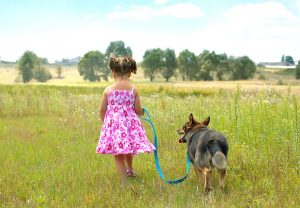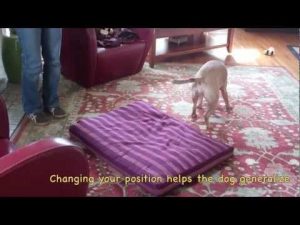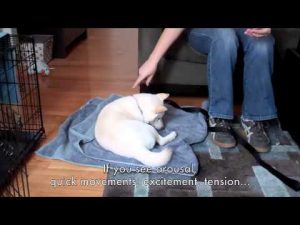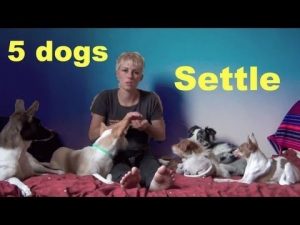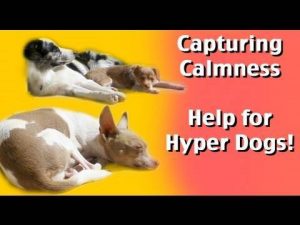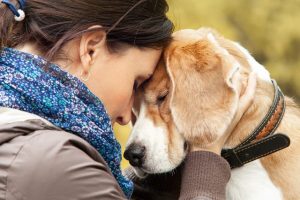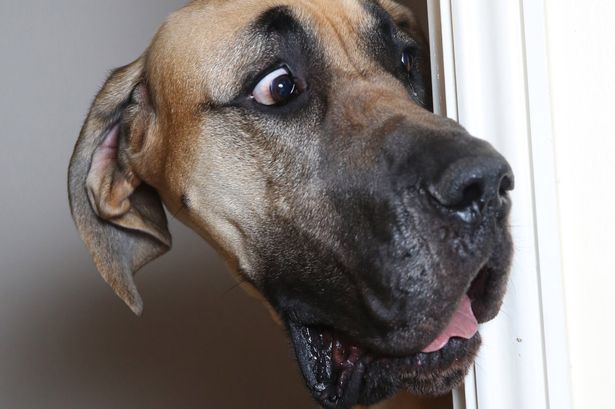
Do you have a dog who is fearful around strangers, children, or other dogs? If you believe in the tough love approach, you may introduce your dog repeatedly to strange people or to children — even if your dog continues to back away, try to avoid them, or display fearful body language. Perhaps you keep going back to the dog park, determined to socialize your dog no matter what. No wimpy dogs allowed!
Forcing a dog to confront her fears over and over again is called flooding. “Flooding exposes a dog to a trigger in a way that immerses her, as she is simultaneously prevented from escaping.” Help For Your Fearful Dog by Nicole Wilde. Flooding can sometimes cause sensitization, an increase in fear. Do you remember the snake scene from Indiana Jones’ Raiders of the Lost Ark? The character of Indiana Jones is famously afraid of snakes, but becoming trapped in a pit of snakes doesn’t do much to improve his opinion of them! It’s a great example of flooding…
There is, thankfully, a better way. There is a way to help our dogs overcome their fears without worsening those fears, increasing anxiety, or even destroying their trust in us. That way is called counterconditioning and desensitization. To quote Help for Your Fearful Dog…
“Desensitization exposes a dog to a fear trigger in a gradual, incremental manner. The process begins at a level low enough to avoid a fearful response, and builds incrementally to the level that originally frightened the dog… Counterconditioning seeks to change an unpleasant emotional response to a trigger into a pleasant one. Once the dog’s underlying emotional response changes, her reaction toward the trigger will change as well. Counterconditioning is accomplished by pairing a trigger with something the dog perceives as wonderful.”
To create your own program for desensitization and counterconditioning, follow these steps:
Determine specifically what frightens your dog. Is it men with hats, teenagers on skateboards, children under the age of six, large dogs over 60# but not small dogs? It’s important to be as specific as possible.
Make a list of reinforcers that really motivate your dog. It might be food, but it could also be a tennis ball or squeaky toy — or perhaps play or interaction with you. If food is high on your dog’s list, go with highly palatable food such as chicken, cheese, hotdogs, freeze-dried liver, or ham in tiny pea-sized pieces.
Find your dog’s threshold. The threshold is the distance at which your dog is aware of the trigger (stranger, child, dog, etc) but is not concerned or showing signs of fear.
Locate great training spots. Sometimes it’s best to start outside of your neighborhood. At home, your dog may be bracing for the neighbor’s dog to race out to the edge of his invisible fence, or scan constantly for cyclists or joggers. A new location can be a beautiful blank slate! Make sure that your training sites give you lots of space — helpful if you need to increase distance to keep your dog under threshold.
Get started by paying close attention to your dog. As soon as your dog sees the trigger, feed treats quickly, one after another. It doesn’t hurt to speak in a happy tone of voice simultaneously as well! And when the trigger disappears, you guessed it, the treats and happy talk stop too. For more information about this process, check out The Cautious Canine by Patricia McConnell.
________________________
At the end of the day, we all want our dogs to be comfortable and to feel safe. We want them to enjoy being dogs and to enjoy being out in the world. Carefully choosing our training methods can help us to build confidence rather than breaking it down. Thank you so much for reading and have a great weekend!



